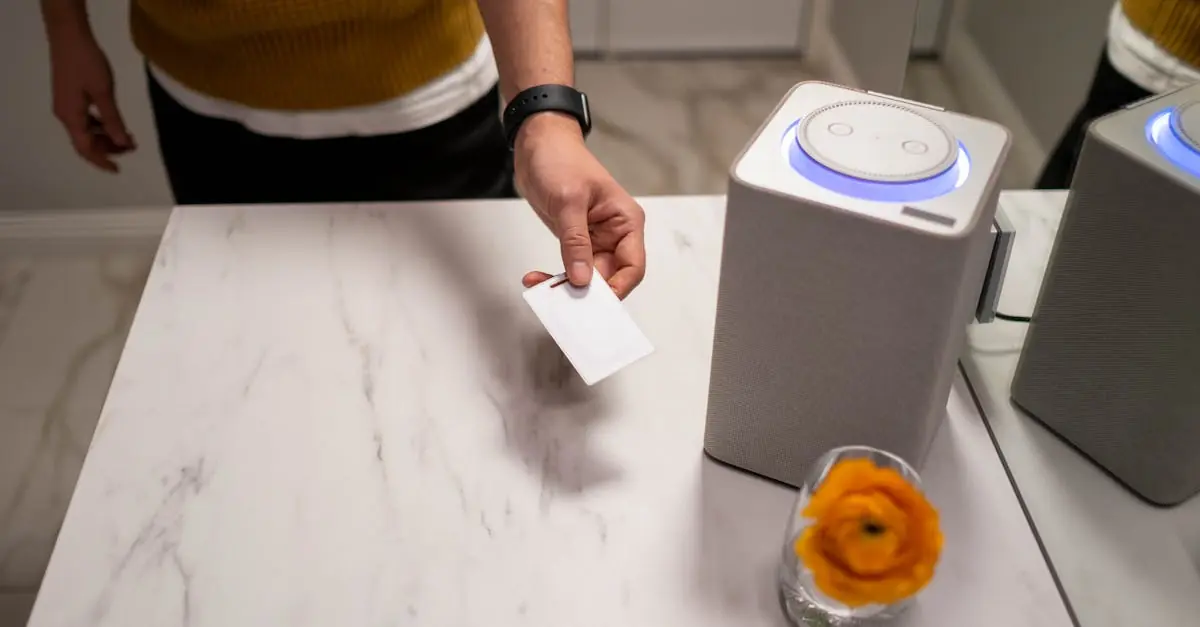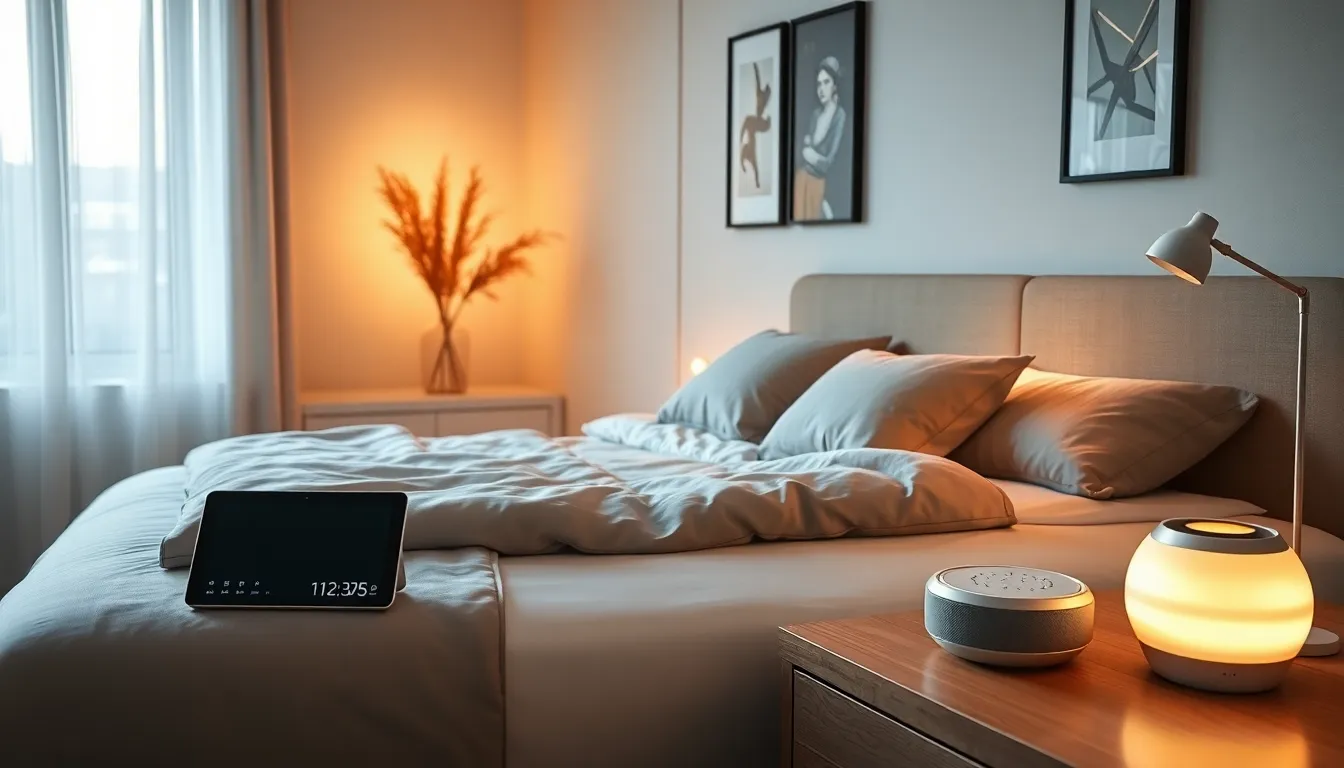Imagine a home where every room knows just how you like it—cozy in the living room and a bit cooler in the kitchen. Smart home zoning systems make this dream a reality. These nifty setups allow homeowners to control temperatures in different areas, ensuring comfort while keeping energy bills from skyrocketing.
Gone are the days of battling over the thermostat like it’s a game of tug-of-war. With smart zoning, everyone can enjoy their ideal climate without turning the whole house into a sauna or an icebox. It’s a clever way to embrace modern living while saving some cash. So, let’s dive into the world of smart home zoning systems and discover how they can transform any house into a personalized oasis of comfort.
Table of Contents
ToggleOverview Of Smart Home Zoning Systems
Smart home zoning systems provide precise temperature control throughout different areas of a house. Homeowners benefit from customizing settings based on individual comfort levels. Advanced technology allows these systems to operate independently for each room, ensuring an ideal atmosphere without excess energy consumption.
Thermostats communicate with smart devices, facilitating seamless operation. Many systems utilize temperature sensors placed in various rooms, allowing real-time adjustments as needed. By identifying how often specific areas are used, homeowners can set schedules that optimize heating and cooling.
Personalized settings create an accommodating environment. For instance, someone may prefer a cooler bedroom while others enjoy warmth in the living room. Electricity costs decrease due to targeted heating or cooling, which conserves energy when rooms are unoccupied.
Integration with home automation systems enhances convenience. Homeowners control their zoning systems through smart devices, voice assistants, or mobile applications. Many options provide alerts and notifications, such as when a room reaches the desired temperature.
Installation of smart home zoning systems varies depending on existing HVAC setups. Retrofitting may involve adding new ductwork or modulating existing units for variable airflow. Manual valves may also be replaced with motorized dampers for automatic airflow regulation.
Wide-ranging benefits highlight the appeal of these systems. Achieving energy efficiency, maximizing comfort, and increasing home value are key advantages. Homeowners invest in smart zoning to elevate their living experience while reducing environmental impact.
Benefits Of Smart Home Zoning Systems
Smart home zoning systems provide significant advantages for modern homeowners. These benefits include improved energy efficiency and enhanced comfort levels tailored to individual preferences.
Improved Energy Efficiency
Energy efficiency improves when homeowners implement smart zoning systems. By controlling temperatures in specific areas, energy waste decreases significantly. For example, systems can automatically adjust heating or cooling in unoccupied rooms. According to studies, homeowners can save up to 30% on energy bills by utilizing these targeted approaches. Installing temperature sensors allows for real-time adjustments, optimizing HVAC performance. Homeowners enjoy both cost savings and reduced environmental impact through this technology.
Enhanced Comfort Levels
Comfort levels rise with the use of smart home zoning systems. Homeowners can set different temperature preferences for each room, accommodating various lifestyles and activities. A cozy living room fosters relaxation while a cooler bedroom promotes restful sleep. Users can easily program their systems to maintain these settings throughout the day. Personalized control contributes to a more enjoyable living experience. A study found that 70% of homeowners feel more satisfied with their home environment after implementing zoning technology. Overall, smart zoning systems provide the comfort desired by individuals and families alike.
Types Of Smart Home Zoning Systems
Smart home zoning systems come in various types, each catering to specific needs and preferences. Understanding these systems enhances their implementation in homes.
Thermostatic Zoning
Thermostatic zoning utilizes multiple thermostats to control temperature in individual rooms. Each thermostat regulates the heating or cooling for its designated space. This system allows homeowners to set distinct temperature preferences, ensuring comfort across different rooms. For example, a cooler setting can be maintained in bedrooms while living areas stay warmer. Real-time temperature adjustments occur as thermostats communicate with HVAC systems, optimizing energy use. Studies show that thermostatic zoning can lead to energy savings of up to 30%.
Motorized Dampers
Motorized dampers integrate seamlessly into zoning systems, controlling airflow in various ducts. These dampers open and close based on temperature needs in different zones. When a specific room requires heating or cooling, dampers redirect airflow accordingly. Homeowners can manage these dampers through smart devices or automation systems, enhancing control. Flexibility in installation allows adaptation to existing HVAC systems. Ultimately, motorized dampers support energy efficiency while providing personalized comfort throughout the home.
Key Features To Look For
Smart home zoning systems come equipped with several essential features that enhance functionality and user experience.
Compatibility With Existing Systems
Compatibility with existing HVAC systems stands as a vital consideration for homeowners. Systems that integrate seamlessly with current setups simplify installation and eliminate the need for extensive modifications. Many zoning solutions support different types of HVAC configurations, ensuring widespread adaptability. For instance, those using conventional forced air systems benefit from smart thermostats that communicate effortlessly. Options for retrofitting or pairing with existing equipment allow homeowners to enjoy intelligent climate control without major renovations. Always look for systems that specify their compatibility to avoid unexpected costs or installation issues.
User-Friendly Interfaces
User-friendly interfaces make controlling smart home zoning systems straightforward. Intuitive apps provide easy access to temperature settings, schedules, and energy consumption data. Homeowners appreciate responsive designs that enable quick adjustments from smartphones or tablets. Voice control integration enhances convenience, allowing users to change settings hands-free. Many systems also offer customizable dashboards where homeowners can visualize energy usage and preferences easily. Identifying interfaces that combine simplicity with rich functionality ensures a pleasant user experience while maximizing the benefits of zoning technology.
Smart home zoning systems represent a significant advancement in home comfort and energy efficiency. By allowing precise temperature control in individual rooms, these systems cater to personal preferences while reducing overall energy consumption. Homeowners can enjoy tailored environments that enhance their living experience and contribute to lower energy bills.
With the integration of smart technology, managing these systems becomes effortless. Whether through mobile apps or voice assistants, users can easily adjust settings and monitor energy use. Investing in a smart zoning system not only elevates comfort but also promotes a more sustainable lifestyle, making it a smart choice for modern homes.



